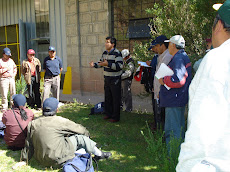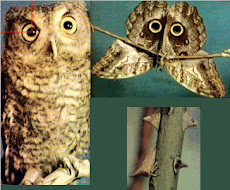LIVERMORE, Calif. – Rising temperatures may lead to more tinder-dry vegetation, but that doesn’t mean there will be a higher risk for wildfires in a particular area.
It all depends on the type of vegetation in the area.
A new study on the cover of the May issue of Ecological Monographs shows that, in some cases, the types of plants growing in an area could override the effects of climate change on wildfire occurrence.
Lawrence Livermore National Laboratory scientist Tom Brown along with Philip Higuera of Montana State University and colleagues looked at the direct and indirect impacts of millennial scale climate change on fire occurrence in the south-central Brooks Range in Alaska.
The team looked at historical fire occurrence by analyzing sediments found in the bottom of lakes.
Using the Lab’s Center for Accelerator Mass Spectrometry, they carbon dated the deposits in the sediment and reconstructed fire occurrences from 15,000 B.C. to the present. They then measured the amount of plant parts, such as fossil pollen, to figure out what type of vegetation dominated the area during the different time periods. Like rings in a tree, different layers of sediment represent different times in the past.
The conclusion: historical changes fire frequencies coincided with changes in the type of vegetation in the area, more so than to rising temperatures alone.
Although changing temperatures and moisture content set the stage for changes in wildfire frequency, they can often be trumped by changes in the distribution and abundance of plants.
Earlier studies have shown that the area burned across arctic and boreal regions will increase over the next century as climate change lengthens the fire season, decreases moisture and increases ignition rates. However, vegetation can alter the direct link between climate and fire by influencing the abundance, structure and moisture content of fuels across space and time, Brown said.
“There’s a complex relationship between fuels and climate,” he said. “Vegetation can have a profound impact on fire occurrences that are opposite or independent of climate’s direct influence on fire.”
In the recent study, the researchers found that changes in climate were less important than changes in vegetation. Despite a transition from a cool, dry climate to a warm, dry climate about 10,500 years ago, the researchers found a sharp decline in the frequency of fires. Their sediment cores from that time period revealed a vegetation change from flammable shrubs to fire-resistant deciduous trees.
The research implies that the impacts of climate change on modern-day fire frequencies could be strongly mediated by changes in vegetation. Thus, in some cases, the impacts of climate change on fire may be less intuitive than initially perceived.
“This could give fire managers a good indication that vegetation can substantially alter the direct effects of climate change on fire occurrence,” Brown said.
Other contributors include the University of Washington and the University of Illinois-Urbana.
Doctor and Master in environment for the Valencia University- Spain. Fisheries Engineer(UNICA - Perú) and Lawyer (Alas Peruanas - Perú). Graduate Teaching: Villarreal, San Marcos, UNI, Cantuta, Trujillo, Cajamarca, among other. Undergraduate Teaching in the FIPA (UNICA). This blog is provided to indicate views, news and information with respect to environment and natural resources.
Entrevista en el Colegio de Ingenieros del Peru
article published on the web
Participation in International Projects
- Curso de Introducción a la Sismologia, Sismologia Instrumental, Sismologia e Internet y GMT: Planos, mapas, graficos y diagramas en la Universidad de Sao Paulo (Brasil) 2009
- PROYECTO DE INVESTIGACION CYTED-BRASIL
- CON LA UNIVERSIDAD DE VALENCIA-ESPAÑA
- Participación en la Organización Internacional de Universidades para el Desarrollo Sostenible (OIUDSMA)
viernes, 10 de julio de 2009
Suscribirse a:
Enviar comentarios (Atom)
University Accreditation and Quality: The white books
Environmental White Books
AS UNIVERSITY PROFESSOR

with students of master environment management (UNH)
Parana
Parana university (Curitiva-Brasil) February 2009
Huancayo
golden forest - Huancayo - Perú-(April 2009)






No hay comentarios:
Publicar un comentario